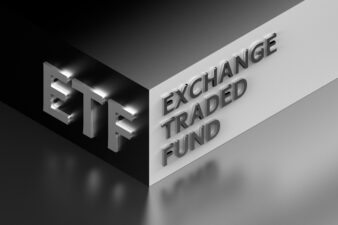The claim that businesses introducing innovative and disruptive technologies or those in industries that are still in their infancy with impressive long-term potential for explosive growth should have valuation multiples ascribed to their stock prices is not up for debate. From Amazon.com, Inc. (NASDAQ:AMZN) to Shopify Inc. (TSX:SHOP)(NYSE:SHOP), investors are used to paying extremely high valuation multiples over extended periods in disruptive high-margin companies.
The Canadian cannabis sector has begun to exhibit emerging-tech valuation multiples – valuations that, as I have previously stated, are “exhibiting concrete signs of overvaluation, creeping into bubble territory.”
Case in point: let’s take a look at the trailing twelve-month (TTM) price-to-sales ratios for four of Canada’s largest (publicly traded) cannabis producers:
| Company | Market Capitalization | Price/Sales Ratio |
| Aurora Cannabis Inc. | $3.15 billion | 135.6 |
| Aphria Inc. | $2.04 billion | 92.1 |
| Canopy Growth Corp. | $3.71 billion | 76.0 |
| Medreleaf Corp. | $1.46 billion | 35.5 |
As the chart above shows, Aurora Cannabis Inc. (TSX:ACB) emerges as the clear winner, with a price to TTM sales of 136 taking the cake, while Medreleaf Corp. (TSX:LEAF) comes in at a “measly” 36 times sales, making this $1.5 billion company the “best value” of the bunch using this metric. Aphria Inc. (TSX:APH) and Canopy Growth Corp. (TSX:WEED) round out the group with price/sales multiples of 92 and 76, respectively.
A healthy price-to-sales ratio in most industries tends to be below 1.5. A number of high-profile analysts and academics have pointed to the dangers of investing in companies with price-to sales-ratios above 1.5, given the reality of what a price-to-sales ratio actually means.
In layman’s terms, a price-to-sales ratio of 136 means is that Aurora would need to pay its investors 136 years’ worth of the company’s trailing twelve-month revenue in order for investors to get their money back. This implies a zero cost of goods, 100% profit margin, and stable revenue over time.
As we know, a great deal of growth is forecasted into Aurora’s valuation, and the company is expected to grow at a triple-digit pace for some time to come. That said, the math uses crazy assumptions that bear no resemblance to reality.
I’ve run a financial model on Aurora and extended its 168.6% year-over-year growth rate out five years (the typical length most analysts forecast out to). Assuming investors would pay $7.00 per share in Q4 2022, the valuation still doesn’t make sense.
Do the math, it’s an interesting exercise.
Looking at a price/sales ratio that is currently nearly 100x – considered the top end of the spectrum for investment-grade companies – Aurora’s current valuation doesn’t provide much in the way of room for error.
Valuations for projected market size make no sense, either
Looking at the four aforementioned companies, we can see that the total combined market capitalizations of these firms at the time of writing sits at $10.36 billion, with a total (disputed) estimated market size upon legalization of between $4.2 billion and $6.2 billion in 2018 from the Canadian Parliamentary Budget Office. Taking a mid-point of the range at $5.2 billion, and ignoring all the other cannabis producers currently, we can see that four of the largest publicly traded cannabis producers in Canada currently have market capitalizations that are approximately equal to twice the projected 2018 market size for both recreational and medicinal marijuana in Canada (numbers which I believe to be higher than what reality could show).
Again, the market capitalizations of only four companies already amounts to almost exactly twice the projected sales for 2018.
As I’ve mentioned in a previous article, I have many issues with the report from the Canadian Parliamentary Budget Office; however, the issues with projected market size aside, it is clear to me that cannabis valuations make no sense.
I invite long-term, value-oriented investors to get a spreadsheet out and try to make the numbers work. I dare you. Just try.
Stay Foolish, my friends.








